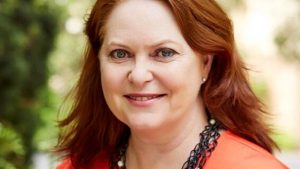How Can AI Be Used in Getting Better Research for the Investment Property Purchase Location?
Key Takeaways AI property research tools gather and analyse complex data in minutes, not hours. They synthesise reports on suburb...
Saving a substantial deposit for a first home could be more costly in the long run than buying sooner with a smaller deposit, a leading mortgage broker claims.
Investors Choice Mortgages director Jane Slack-Smith said spending too long saving was a mistake considering new government benefits allowed first-time buyers to purchase smarter and faster.
“Building equity” was a better approach, the industry veteran said.
“A lot of young buyers have the wrong mentality when it comes to buying,” Ms Slack-Smith said. “They think they have to save a large deposit and perhaps wait until they have an established career or partner.
“In the majority of cases, a 28-year-old entering the market with a low deposit, backed by stable income, will be in a better position than a 35-year-old who waited to increase their deposit.”
This was because the growth in value of the property, if bought well and in the right location, would outpace most people’s capacity to save, she said.
Ms Slack-Smith said the government’s first home buyer deposit guarantee allowing buyers to access homes with only a five per cent deposit was an opportunity to save about $30,000 in lender’s mortgage insurance.
Drawing on state duty concessions could also help some buyers save about $30,000 in property taxes.
“This year is a golden era – a rare moment in time for them to get into the property market with less money than they have ever needed.”
Ms Slack-Smith this year launched a ‘Five-Step Financial Freedom Framework’ designed to educate first home buyers about investment strategies.

Investors Choice Mortgages director Jane Slack-Smith.
The principles were simple, she said. “Buy your first house – not a unit – strategically and as early as possible, taking advantage of all the ‘free’ money and (government) incentives,” Ms Slack-Smith said.
She added the first home should be well-positioned in an area primed for good growth, suggesting the buyers live in it for the required time frame required to access benefits.
Depending on the state, this could involve a live-in period of six-to-12 months.
They should “think of it as an investment property; not their forever home”, she said.
“Once they have that property secured, they can just park it and move on with their life. By the time they get to 40- or 50-years-old they’ve had a property that’s been growing not for five or 10 years, but 20 or 30 years.”
Melbourne residents Carolina Pena, 28, and Christian Arevalo, 31, said they planned to buy quickly rather than wait to stockpile a large deposit.

Buyers who accessed government benefits would need $50,000 less upfront, in some instances.
They currently live a Hawthorne East but will use a five per cent deposit to buy in outer Melbourne using “an investor’s mindset”.
“At the beginning, looking at property was a faraway idea and we thought we would need to save $50,000 or more,” Ms Pena said.
“We have realised now is a really good opportunity with the grants and stamp duty concessions … all of a sudden getting into our first property is a lot more possible.”
The couple plan to live in their first home briefly before turning it into an investment property and moving to another home.
By taking advantage of first home buyer benefits they will only need $30,000 upfront, Ms Pena said.
“It puts us in a very strong position,” she said. “Our first home is not out of reach anymore – (it’s) too good a situation for us to pass up.”
Make a time with one of our experts for more information about FHLDS https://investorschoice.com.au/bookacall
Via Real Estate
Key Takeaways AI property research tools gather and analyse complex data in minutes, not hours. They synthesise reports on suburb...
Key Takeaways Starting at 45 provides unique advantages: Higher income, financial stability, and clearer long-term goals Success stories...